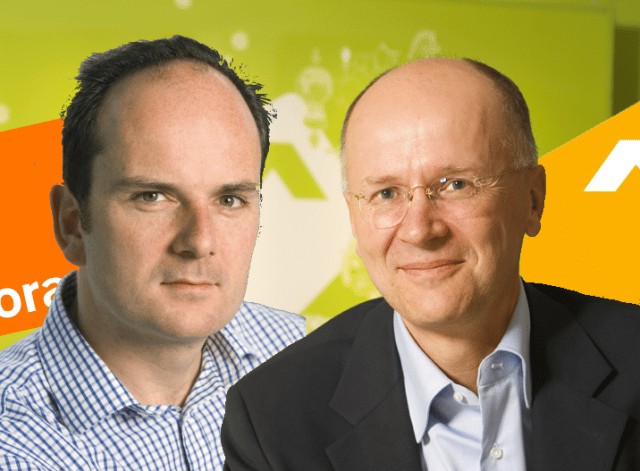
Orange UK says it will form a single mobile ad sales team with Blyk, which has now abandoned its ad-funded virtual mobile network (MVNO) model in favour of less burdensome carrier partnerships.
“The MVNO had its own benefits but heavy lifting took time,” Blyk CEO Pekka Ala-Pietilä tells paidContent:UK. “If we want to roll this our fast, we can do much better if we partner with operators.”
Blyk, which had offered its customers aged 16 to 24 free calls and SMS in return for receiving mobile ads, last week said Vodafone Netherlands would be its first carrier partner, starting a new Blyk-branded service. Orange was already the network provider for Blyk’s UK MVNO, which had amassed 200,000 users; those customers will now lose service from August 26 as Blyk begins its phase two…
So will Orange offer free, ad-funded mobile price plans? Details are sketchy, with further announcements due in a couple of weeks. “The way we go to market is still being defined,” says Orange’s wholesale biz dev VP Marc Overton. “We are redefining the way it’s being packaged. It’s not just about cheaper calls for listening to adverts. We’ve joined our thinking up a bit more than that. It’s just part of what you get – these are great offers you get as a result of taking this tariff; the idea of free content is well established.”
There will likely be tie-ups with Orange’s Orange Wednesday offer programme, which already gives two-for-one cinema tickets and pizzas – the kind of temptation that could swing a credit crunch customer to churn to Orange. But, in lieu of any pricepoints, it’s not clear whether the arrangement is to supply free ad-supported services or whether Blyk is also ditching its original raison d’etre, along with the switch in model, to merely facilitate marketing offers.
So why did Blyk flick from MVNO to a part of the carrier chain? Ala-Pietilä says the model had been “perfected and ready to be scaled to other markets”; but it seems cheaper to work under carriers than against them: “What was very obvious from the beginning was, there was no other way than taking the MVNO route in order to have all the freedom to choose the best technologies, be they behavioural or marketing models… To develop what we had done would not have been possible with any other approaches than MVNO. It’s a natural evolution.”
It’s an evolution likely to see some staff reorgansation. Fewer people are now needed on the technology side, Ala-Pietilä says, adding that the company has ensured its workers can play different roles.
The CEO claims ads delivered to Blyk customers get an average 25 percent response rate – over and beyond anything which has been achieved in any other mobile media, let alone the other media models … once relevance has been achieved, the advertisements begin to be perceived as content, adding value to users’ lives”. And he claims boldly: “This is not a mobile advertising we are talking about – we are talking about mobile media.”
Overton: “Mobile advertising to date has been very much a repurposing of web advertising on to mobile portals, that’s hidden behind the ‘internet; button and isn’t really targeted and pushed to people in a timely manner that’s relevant to them. This is fund different – this allows us to target our customers with great offers. “We can now have a conversation with our customers that goes beyond just having a billing relationship. The interactivity of the marketing formats Blyk has designed are highly compelling.”
But, curiously, Orange won’t gain Blyk’s 200,000 customers, who will merely be cut off, denying Orange the opportunity to bump up its 16 million subscriber base. Ala-Pietilä: “As we don’t own our members, there’s no contract signed, our members have the full freedom to choose their next service as they wish. We have no right to move our customers over anywhere.” Unlike Vodafone (NYSE: VOD) NL, Orange’s consumer offering won’t be Blyk-branded.
So will Blyk effectively become Orange’s mobile ad sales operation? Overton says Orange has it’s own team: “Over the next couple of months, there will be a number of announcements to strengthen that. For mobile media capability, we now need to deliver. These guys will represent us and work with us when we go out and talk to advertisers and agencies. There’s one team – Orange’s ad sales force with Blyk – to develop innovative advertising offerings.”
Blyk is targeting more carrier markets than just UK and Holland. Ala-Pietilä: “We are having a good number of discussions in Europe and Asia.” And we could now even see Blyk challenge Virgin Mobile USA (NYSE: VM) on the ad-supported MVNO front: “The US for us would have been a very, very difficult market to enter under the MVNO approach. Now, when we have a partnering approach, it’s a completely different thing; that means the US is definitely back on our roadmap.”